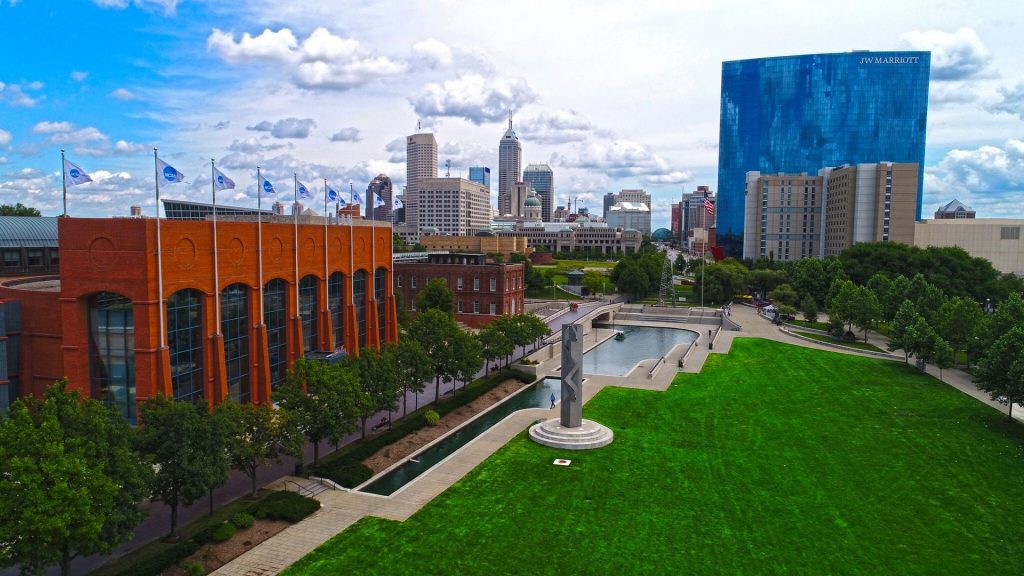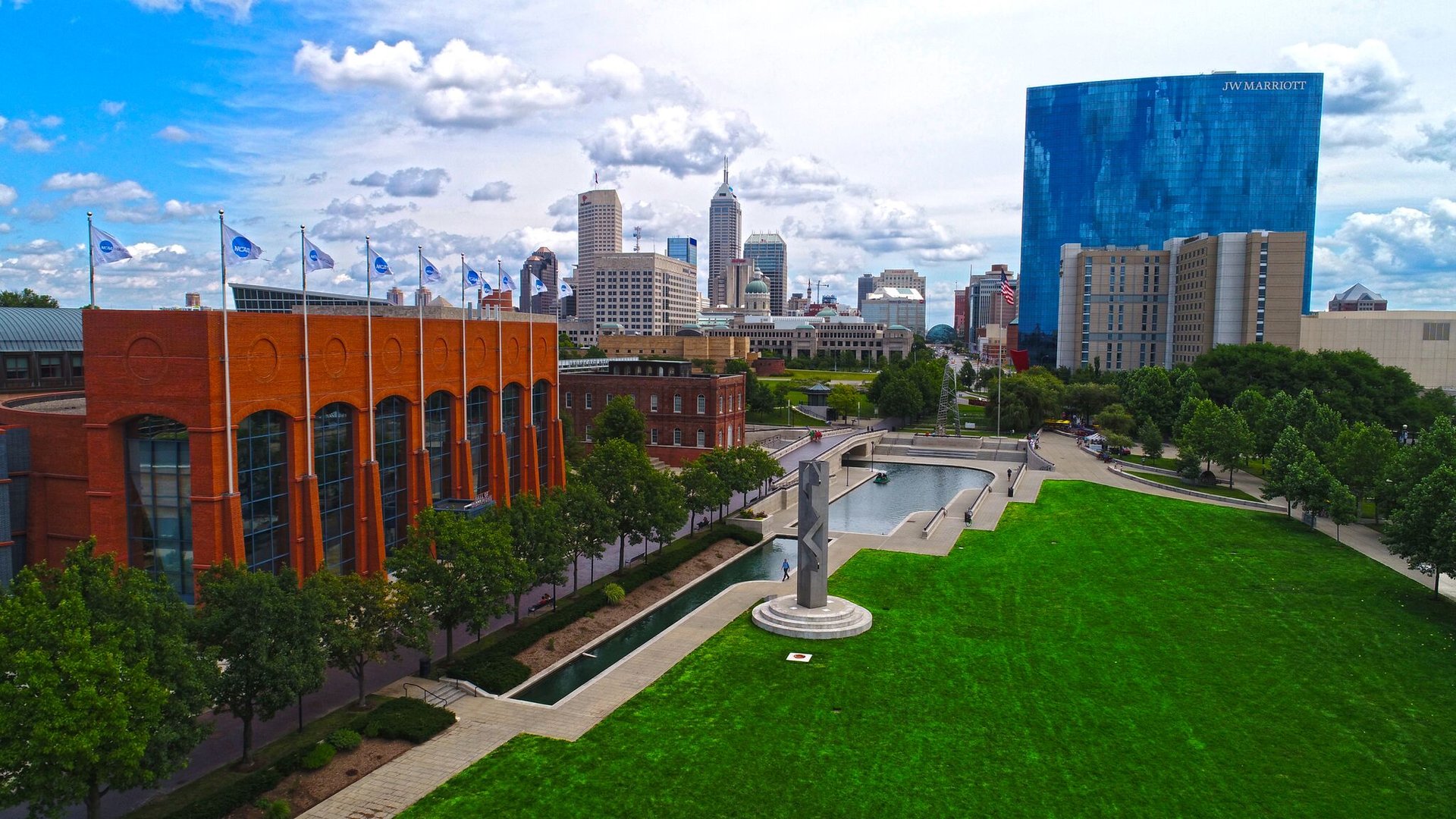The NCAA Headquarters moved from its longtime home in Kansas City to Indianapolis in 1999. Key to drawing the headquarters to Indianapolis was the ability for the city to cast itself as an amateur sports capital. Indianapolis not only hosted Final Four tournaments and other collegiate events, but the city was the site of the in 1987 and six Olympic diving trials (1924, 1952, 1984, 1992, 1996, 2000). Situating the NCAA Headquarters around the collection of world-class athletic venues and other amateur sports’ governing bodies played a role in luring the organization to Indianapolis.

Renowned Indianapolis-born architect designed the NCAA Hall of Champions, unique not only in its form but also in the innovative use of land. The three-building complex was designed to provide a new tourist attraction in as well as to provide a fresh image for the organization. The 175,000 square-foot complex serves as an example of adaptive reuse of a former brownfield site that once housed an industrial power plant.
The NCAA complex is home to the organization’s headquarters and the Hall of Champions museum. The complex is situated along the Canal and the within White River State Park. The three linked buildings include office space for the corporate headquarters with an adjacent conference center, museum space, and a grand hall with an exhibition hall. They also share a courtyard that connects to the vast green space of the state park to the adjacent canal and cultural trail.
The grand hall honoring past college athletes is located on the southern edge of the White River Canal. The grand hall and exhibition center is the area specifically devoted to the Hall of Champions. Its vaulted double-barrel ceiling rises over four stories and is visible through seven massive windows running the length of the building. This unique facade evokes the aesthetic of a football stadium and is frequently used as a backdrop for NCAA announcements and broadcasts. The interior of the grand hall is draped with flags of the member institutions.
The museum area is located on the north side of the complex. A 90-seat orientation theatre and two floors of exhibits are housed in the Exhibition Center. The museum opened in 2000 during the NCAA Men’s Final Four tournament in Indianapolis.
The NCAA corporate office space and conference center are located along the east edge of the complex. A small historic building that formerly housed the superintendent’s offices for the industrial power plant also sits on the east edge of the complex. Graves’ plan called for the renovation of that building to house the National Federation of State High School Associations.
This organization followed the NCAA from Kansas to Indianapolis. In all, the collection of three buildings evokes a collegiate campus situated amid the state park and canal.
An electrical fire struck the building in November 2007, causing damage to the “One Shining Moment” exhibit and its surrounding areas. The Hall was closed temporarily and reopened on March 12, 2009. Instead of simply repairing the damage, space was redesigned to create additional exhibit areas that were more environmentally sustainable.
From its headquarters, the NCAA governs its various member schools. It adjudicates its established rules, provides financial support, administers drug tests, and organizes the wide swath of annual NCAA championships (among other responsibilities).
The NCAA has provided a major economic boon to Indianapolis by bringing collegiate sporting events to town every year. Indianapolis is poised to host a major NCAA event at least once a year through 2039. The city has already hosted the eight times (1980, 1991, 1997, 2000, 2006, 2010, 2015, and 2021), more than any other city.

Help improve this entry
Contribute information, offer corrections, suggest images.
You can also recommend new entries related to this topic.


